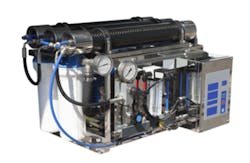BIRMINGHAM — In the article, “Selling reverse osmosis to ‘green’ customers,” featured in a previous issue of Water Technology, we discuss how more consumers are turning to effective, sustainable solutions when it comes to reverse osmosis (RO).
In the article, we offer a few variables that can impact RO technology:
- The quantity of permeate water produced
- The quality of the water being treated
- Pressure applied to water/flow rate
- Water temperature
- Recovery
- Certain contaminants, such as specific pesticides, toluene, cyanide, chloroform and calcium
- Total dissolved solids (TDS)
- Hardness, typically above 12 gpg
- Chlorine
- High silica levels.
You can find the entire article on selling sustainable RO solutions here.
About the Author
Sign up for our eNewsletters
Get the latest news and updates
